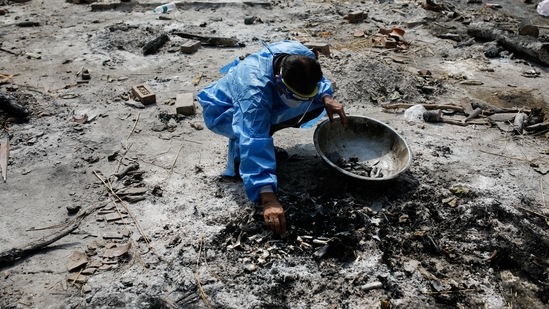Covid-19: What you need to know today
India has an estimated 940 million people over the age of 18. Experts say that vaccines will start having an impact on infection rates when 40% of the eligible population has been vaccinated, if even partially, as long as non-pharmaceutical interventions continue.
Opening up Covid-19 vaccination to everyone over the age of 18 and making vaccines available in the open market are both good ideas.

There is very significant vaccine hesitancy across India. Things have improved, but a large number of people, even in states with high levels of literacy and awareness, still don’t want to be vaccinated; Tamil Nadu is a case in point. Universal eligibility (anyone over the age of 18; vaccines are still being tested on the younger population) is therefore the surest way of reaching a critical number of vaccinations even as the Centre and state work on overcoming vaccine hesitancy.
India has an estimated 940 million people over the age of 18. Experts say that vaccines will start having an impact on infection rates when 40% of the eligible population has been vaccinated, if even partially, as long as non-pharmaceutical interventions (the wearing of masks, social distancing, a ban on large events) continue. That’s 376 million people. India has so far administered vaccines to around 125 million people (98.6 million have received one dose and 26.7 million both doses). It needs to vaccinate around 250 million more people.
Also read | Covid-19: What you need to know today
Open-market access may perpetuate inequity but it will mean that those who can afford and have access to private health care facilities will scramble to get vaccinated, helping take the number of those vaccinated closer to that 375 million mark.
If this approach seems too focused on the number, it is because that is the only proven way to crush the pandemic. The Centre and the states should, even as they work on removing vaccine hesitancy, also work to remove the inequity in the distribution of the vaccine — but forsaking the open market approach because it perpetuates inequity will end up being counterproductive in the short term.
The real problem is supply.
India clearly does not have enough vaccines at this point in time. This may change over the next few months, with enhanced capacities at both Serum Institute of India and Bharat Biotech kicking in, and imports of Sputnik V, but there’s still a lack of information on the timing and quantities involved. It would help to have details of exactly how many doses SII and Bharat Biotech will produce every month (for at the least the next six months). Half of these will be given to the Centre for the vaccination of people over the age of 45, and the other half will be available for purchase by the states, private hospitals and enterprises, and, exports (both companies have contractual export commitments).
Also read | Covid-19: What really matters
Based on publicly available information, for the next few months, this split is likely to be 40-50 million for the first (Centre), and 40-50 million for the second (states, private channels, exports). It is expected to become 55-75 million for the first, and 55-75 million for the second after that (the wide range is because we do not have complete information on the capacities of the two companies from June or July).
And the real problem is the prioritisation and optimisation of supplies. Again, SII, Bharat, and as and when imports of Sputnik V are available, the vaccine’s distributor in India Dr Reddy’s, will have to transparently state how they are going to prioritise and phase orders across states, private buyers and exports.
If all this information is available, then all the states (and Union territories) have to do is to solve the fairly basic optimisation problem they are presented with, assuming an upper bound to the number of vaccinations that can be carried out in a day.
At a national level, given the experience of Phase 1 and Phase 2 of the vaccine drive, it may not be possible to administer more than five million doses a day (and this can be cascaded down into targets for each state and Union territory).
To avoid confusion, the Centre, the states, and the vaccine makers/suppliers will have to sit down together and solve this optimisation problem — and then launch Phase 3 of the drive (a launch on May 1 is impossible and impractical). They can throw another important variable in the mix that can help them reach the 375 million number sooner — extending the time between two Covishield doses to 10-12 weeks.






